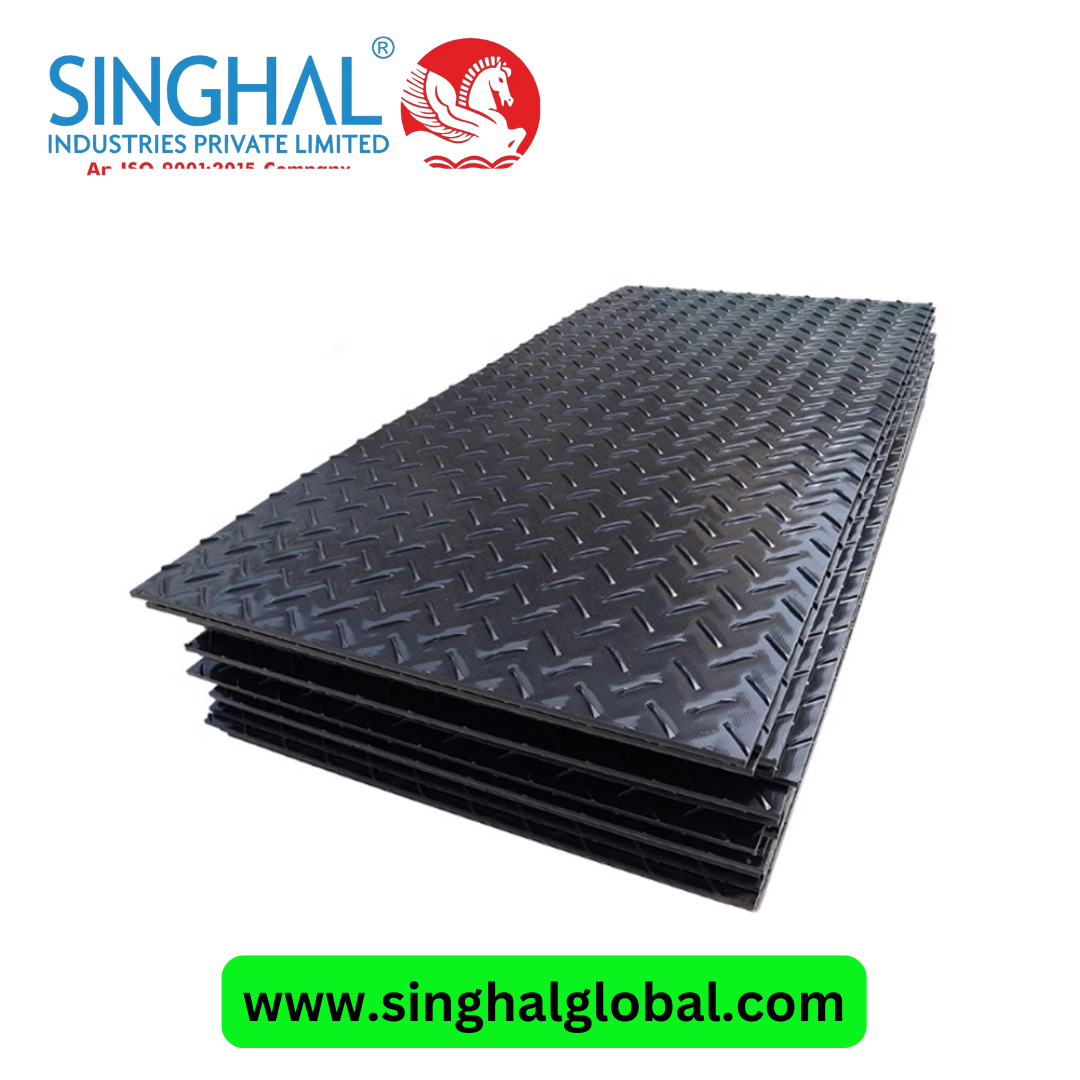In various industries and applications, protecting the ground from damage is crucial. Whether for construction sites, event venues, or agricultural projects, HDPE ground protection mats offer a practical and effective solution. This article provides an in-depth look at HDPE Ground Protection Mats, their advantages, common uses, and answers to frequently asked questions.
What Are HDPE Ground Protection Mats?
HDPE (High-Density Polyethylene) ground protection mats are durable, heavy-duty mats made from high-density polyethylene, a robust thermoplastic material. These mats are designed to distribute weight and protect the underlying ground from damage caused by heavy equipment, vehicles, and foot traffic. The interlocking design of many HDPE mats ensures stability and prevents shifting during use.
Key Benefits of HDPE Ground Protection Mats
- Durability: HDPE ground protection mats are highly durable, capable of withstanding significant weight and pressure without cracking or deforming. This durability ensures they perform effectively even in demanding conditions.
- Load Distribution: One of the primary functions of HDPE mats is to distribute the weight of equipment and vehicles evenly across the ground. This prevents soil compaction and reduces the risk of ruts and damage to the surface.
- Weather Resistance: HDPE mats are resistant to a range of environmental conditions, including rain, snow, and UV radiation. They do not absorb water, which helps in maintaining their structural integrity and effectiveness over time.
- Ease of Installation: These mats are designed for easy installation. They can be quickly laid out and connected using their interlocking system, minimizing the need for specialized equipment or labor.
- Reusable and Recyclable: HDPE mats can be reused multiple times, making them a cost-effective solution for ground protection. Additionally, they are recyclable, contributing to environmental sustainability.
- Non-Slip Surface: Many HDPE ground protection mats feature a textured surface that provides traction, reducing the risk of slipping for vehicles and personnel.
- Cost-Effective: Due to their durability and reusability, HDPE mats offer a cost-effective solution for ground protection. Their long lifespan and minimal maintenance needs add to their overall value.
Common Applications of HDPE Ground Protection Mats
- Construction Sites: On construction sites, HDPE Ground Protection Mats are used to protect the ground from damage caused by heavy machinery and vehicles. They help in maintaining site accessibility and reducing cleanup and repair costs.
- Event Venues: For outdoor events such as festivals, concerts, and fairs, these mats are used to create stable walkways and areas for vehicles, preventing damage to lawns and landscaping.
- Agricultural Projects: In agriculture, HDPE mats are used to protect soil and reduce compaction during operations like harvesting and planting. They also help in creating stable surfaces for equipment.
- Landscaping: When undertaking landscaping projects, HDPE mats protect newly planted areas and prevent damage to existing landscaping. They provide a stable surface for workers and equipment.
- Emergency and Disaster Relief: During emergency situations or disaster relief efforts, HDPE mats are used to create stable paths for vehicles and personnel in affected areas, reducing the risk of equipment getting stuck.
- Utilities and Infrastructure: For utility maintenance and infrastructure projects, HDPE mats protect sensitive ground and provide stable access for maintenance vehicles and equipment.
Installation and Maintenance
Installation: Installing HDPE ground protection mats is a straightforward process. Begin by clearing the ground of debris and ensuring it is level. Lay out the mats and connect them using their interlocking features. The mats should be arranged in a pattern that covers the entire area where protection is needed. Ensure that the mats are properly aligned to avoid any gaps or shifting.
Maintenance: HDPE mats require minimal maintenance. Regular cleaning with a broom or pressure washer can help remove dirt and debris. Inspect the mats periodically for any signs of wear or damage and replace any that are compromised to maintain effectiveness.
Conclusion
HDPE Ground Protection Mats offer a robust and versatile solution for protecting the ground in various applications. Their durability, ease of use, and cost-effectiveness make them an excellent choice for construction sites, event venues, agricultural projects, and more. By understanding their benefits and how to use them effectively, you can ensure that your ground protection needs are met with a reliable and efficient solution.
If you have any additional questions or need further assistance, consult with suppliers or industry experts to get the best advice tailored to your specific requirements.
Frequently Asked Questions (FAQs)
1. How strong are HDPE ground protection mats?
HDPE ground protection mats are designed to withstand heavy loads and high pressure. They can typically support the weight of large construction vehicles and machinery, making them suitable for demanding environments.
2. Can HDPE mats be used on all types of ground surfaces?
HDPE mats are versatile and can be used on a variety of surfaces, including grass, dirt, gravel, and sand. However, it is essential to ensure the ground is relatively level and free of large debris before installation to ensure optimal performance.
3. How long do HDPE ground protection mats last?
The lifespan of HDPE ground protection mats depends on factors such as usage, environmental conditions, and maintenance. Under normal conditions, they can last for several years. Regular inspection and proper care can extend their lifespan.
4. Are HDPE mats easy to transport and store?
Yes, HDPE mats are designed to be portable and easy to store. They are typically lightweight and can be stacked or palletized for efficient transportation and storage.


